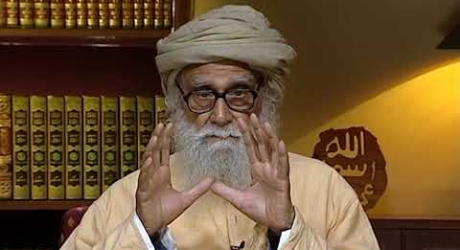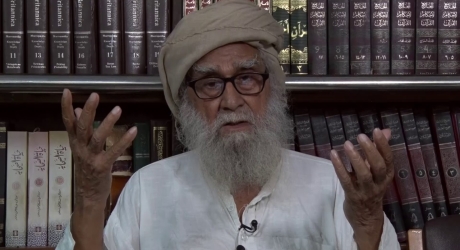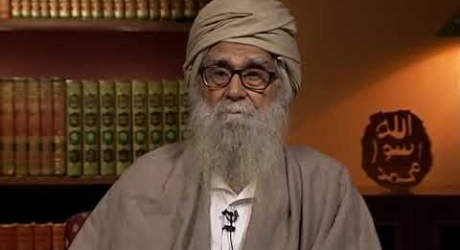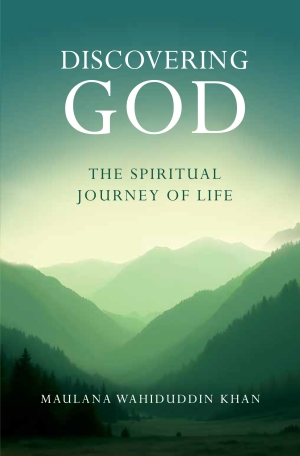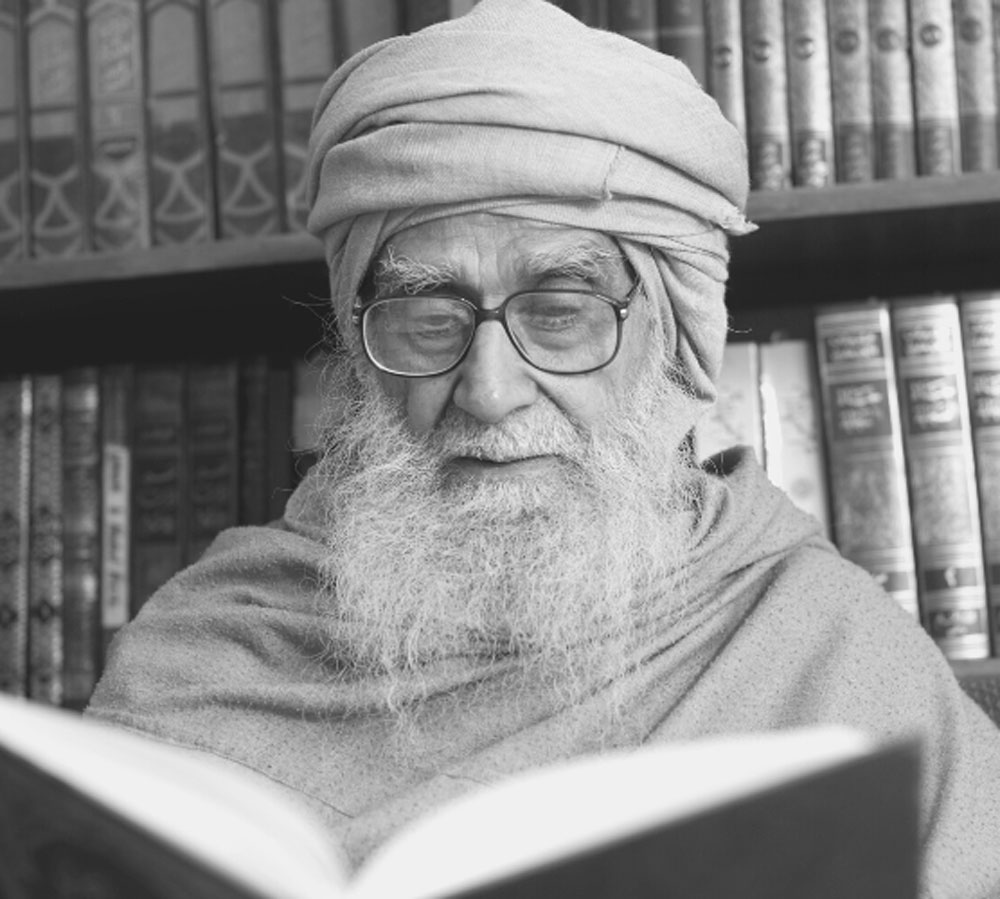Prophet Muhammad and his Companions ushered in the monotheistic revolution in the 7th century in the wake of Islam. This monotheistic revolution continued to predominate for one thousand years. Then history witnessed a new age—the age of atheism. It was in the 18th and 19th centuries that it reached its culminating point. During this epoch, it was asserted, on the strength of scientific findings of that time based on the direct argument that only those things exist that can be seen, and as God is invisible, we cannot believe in His existence. Based on this they claimed that modern research had destroyed the foundations of religion quite definitively. The argument often offered to negate the existence of God was His being invisible. It is this claim, which has thus been expressed by a certain atheist: “Science has shown religion to be history’s cruelest and wickedest hoax”.
But new scientific investigations, carried out at the beginning of the 20th century, with the splitting of the atom, and the acceptance of the inferential argument as a scientific argument turned the tide against the credibility of this position. It became apparent and accepted that there are many aspects of nature that are invisible yet they exist. One of the books written on this new world discovered by science is Science and the Unseen World by Sir Arthur Eddington. Now the world is witnessing the same momentous revolution in thinking toward monotheism, as took place in the seventh century with the advent of the Prophet of Islam. God himself has razed the walls of atheism to the ground and science stands ready to bear out His word.
Featured Articles
Featured Videos
FAQs
Becoming an atheist is more an outcome of being against theism than a self-discovery of the non-existence of God. Atheism was earlier backed on scientific validation, however, it has now lost its foundations and has become anachronistic in nature. For those who still claim scientific backing for atheism should learn about what some of the authorities in science have said about the topic.
Once Einstein was asked if he was an atheist. He said:
You may call me an agnostic, but I do not share the crusading spirit of the professional atheist whose fervor is mostly due to a painful act of liberation from the fetters of religious indoctrination received in youth. (Sept. 28, 1949 letter to Guy Raner Jr.)
This means scientists are not in a position to say that there is no God, they can just take a sceptical stand on the existence of God. This is because the accepted base for belief in something in the intellectual world is scientific, but since there is no scientific discovery about the non-existence of God, this is still subject to interpretation.
Towards the end of the 19th century, there was a strong wave of what was popularly called ‘scientific atheism’. The argument often offered to negate the existence of God was His being invisible. But new scientific investigations carried out at the beginning of the 20th century started turning the tide against the credibility of this position, it becoming accepted that there are many aspects of nature that are invisible yet they exist. One of the books written on this new world discovered by science is Science and the Unseen World by Sir Arthur Eddington.
At the beginning of the 20th century Sir James Jeans declared that the universe which had been discovered by modern science was not compatible with the mechanical interpretation that had gained ground since past several decades. The age of quantum mechanics has established that nothing is fully observable. Contrary to previous belief, it was not the atom that was the last fundamental particle that constituted matter, rather there were unobservable subatomic particles that served as the building blocks of atoms. In a book published in 1988, entitled A Brief History of Time, Stephen W. Hawking (one of the foremost physicists of present times) explains the Big Bang Theory, according to which the universe is constantly expanding. After working out the relevant mathematical equations, Hawking has reached the conclusion that the expansion of the universe is taking place according to a well-calculated scheme. The initial rate of expansion must have been fixed with great accuracy so that it would always be less than the critical rate, i.e. the rate at which the universe would begin to collapse again. This view cannot be explained unless it is accepted that the rate of expansion of the universe has been determined with the utmost precision. Stephen Hawking writes:
It would be very difficult to explain why the universe should have begun in just this way, except as the act of a God who intended to create beings like us. (p. 127)
One of the most amazing qualities of the universe is that there is no interpretation or explanation of it, other than that which allows for God’s existence, despite the fact that the best brains in every age have attempted to unravel its mysteries. It has been claimed that the universe has always been in existence in its present form. It has also been claimed that it came into being on its own and that it goes on its own. Cause and effect have been said to have created everything, and attempts have also been made to prove the law of evolution to be the creator of the universe; which however can be only a process of nature, but never its creator. The more a man learns about the universe, the more absurd do these theories appear to him; the stranger does it seem that something, or some being other than God Almighty should be the Lord and Master of the Universe. The universe, by its very existence, testifies to the fact that God is its Creator. I find other claims to be without concrete foundation. Whatever arguments or opposing opinions have been expressed to propagate this theory have proved erroneous by the knowledge acquired to date through human research.
One of my early works on this subject include the book God Arises: Evidence of God in Nature and Science. It establishes the existence of God according to modern scientific findings. It has been translated into several languages.
Source: The Seeker’s Guide
A spiritual atheist is spiritual only in the partial sense. Because spirituality needs a basis, and in atheism or the philosophy of atheism there is no basis for spirituality. Spiritual atheism is like a rootless tree. Religion gives us a basis for spirituality. For example, life is full of disadvantages. When an atheist faces these disadvantages, he may fall prey to frustration. However, a believer will not become frustrated, because his belief in God provides him unlimited conviction and trust, which an atheist does not possess.
No, science actually supports religious truths, like the existence of God. The modern age was regarded by some as anti-religious. They went to the extent of calling it the Age of Atheism. Certain people asserted, on the strength of scientific findings, that modern research had destroyed the foundations of religion quite definitively, saying: “Science has shown religion to be history’s cruelest and wickedest hoax”. But today, science, which was supposed to have brought religion to an ignominious end, has at last been turned against the atheists. Science itself has brought a revolution in thinking.
The reason certain people said that science has shown religion to be a hoax, as in the pre-Einstein era, people held that the concept of God pertained to the unseen world and that since no direct argument was available to prove it, belief in God was illogical. They considered all the relevant inferential and indirect arguments as scientifically invalid. But now the whole situation has changed. Today, science holds the inferential argument as valid.
With the splitting up of the atom, it has been proved that nothing is really observable, and the existence of anything can be established only by means of the inferential argument, not the direct argument. We have to then say, if the inferential argument is valid with regard to the unseen micro-world, it is also valid with regard to the existence of God and other religious truths. Bertrand Russell admitted the fact that the argument centering on design propounded by theologians seeking to offer evidence for the existence of God is scientifically valid. If we believe in the universe—the creation of the Creator—through the inferential argument, we also have to believe in the Creator, God Almighty. Science itself has razed the walls of atheism to the ground. Today science stands in support of religion.
Prophet Muhammad and his Companions ushered in the monotheistic revolution in the 7th century in the wake of Islam. This monotheistic revolution continued to predominate for one thousand years. Then history witnessed a new age—the age of atheism. It was in the 18th and 19th centuries that it reached its culminating point. During this epoch, it was asserted, on the strength of scientific findings of that time based on the direct argument that only those things exist that can be seen, and as God is invisible, we cannot believe in His existence. The argument often offered to negate the existence of God was His being invisible.
But new scientific investigations, carried out at the beginning of the 20th century, with the splitting of the atom, and the acceptance of the inferential argument as a scientific argument turned the tide against the credibility of this position. It became apparent and accepted that there are many aspects of nature that are invisible yet they exist. One of the books written on this new world discovered by science is Science and the Unseen World by Sir Arthur Eddington. Now the world is witnessing the same momentous revolution in thinking toward monotheism, as took place in the seventh century with the advent of the Prophet of Islam. God himself has razed the walls of atheism to the ground and science stands ready to bear out His word.


